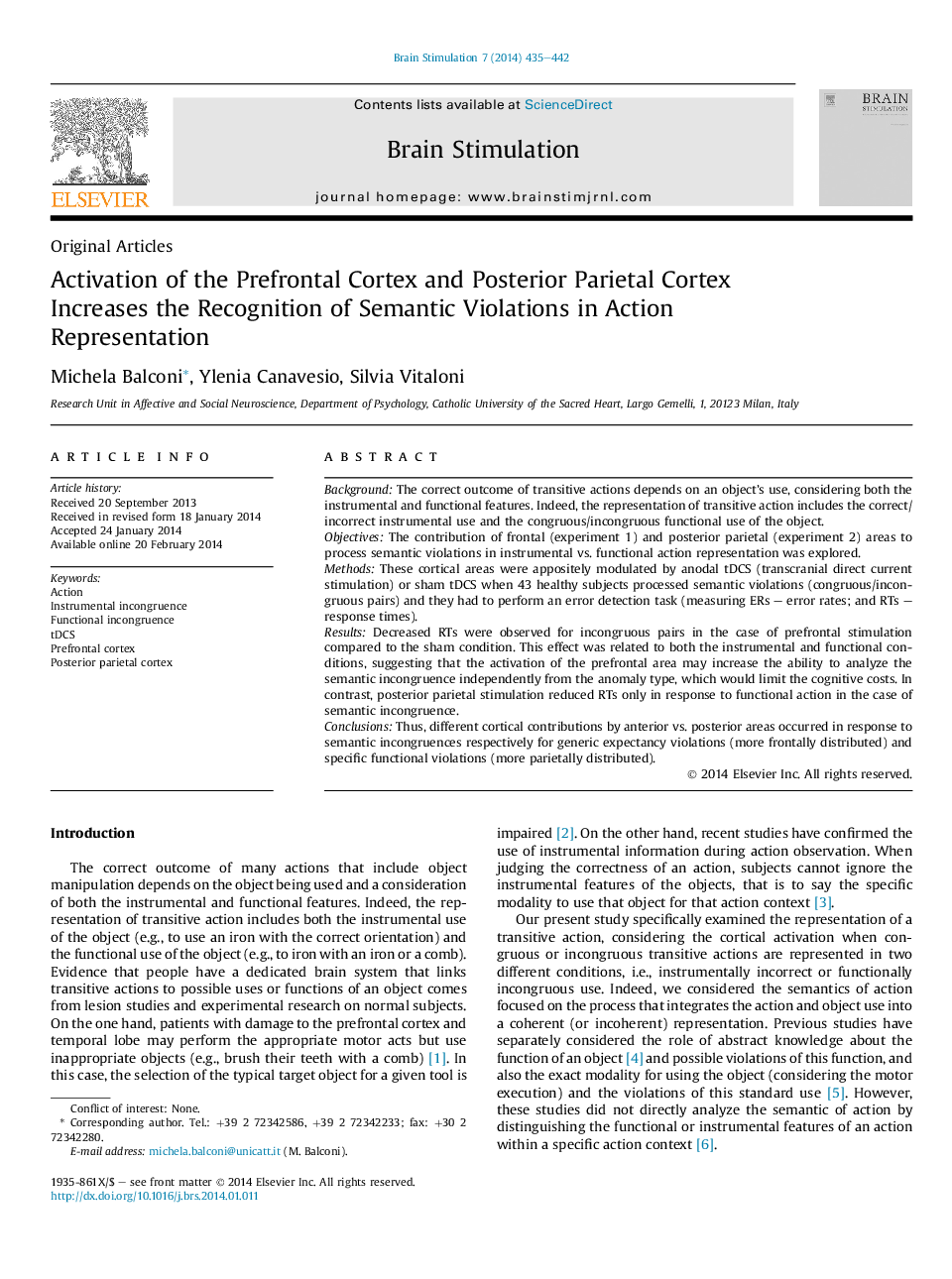| Article ID | Journal | Published Year | Pages | File Type |
|---|---|---|---|---|
| 3038783 | Brain Stimulation | 2014 | 8 Pages |
BackgroundThe correct outcome of transitive actions depends on an object's use, considering both the instrumental and functional features. Indeed, the representation of transitive action includes the correct/incorrect instrumental use and the congruous/incongruous functional use of the object.ObjectivesThe contribution of frontal (experiment 1) and posterior parietal (experiment 2) areas to process semantic violations in instrumental vs. functional action representation was explored.MethodsThese cortical areas were appositely modulated by anodal tDCS (transcranial direct current stimulation) or sham tDCS when 43 healthy subjects processed semantic violations (congruous/incongruous pairs) and they had to perform an error detection task (measuring ERs – error rates; and RTs – response times).ResultsDecreased RTs were observed for incongruous pairs in the case of prefrontal stimulation compared to the sham condition. This effect was related to both the instrumental and functional conditions, suggesting that the activation of the prefrontal area may increase the ability to analyze the semantic incongruence independently from the anomaly type, which would limit the cognitive costs. In contrast, posterior parietal stimulation reduced RTs only in response to functional action in the case of semantic incongruence.ConclusionsThus, different cortical contributions by anterior vs. posterior areas occurred in response to semantic incongruences respectively for generic expectancy violations (more frontally distributed) and specific functional violations (more parietally distributed).
